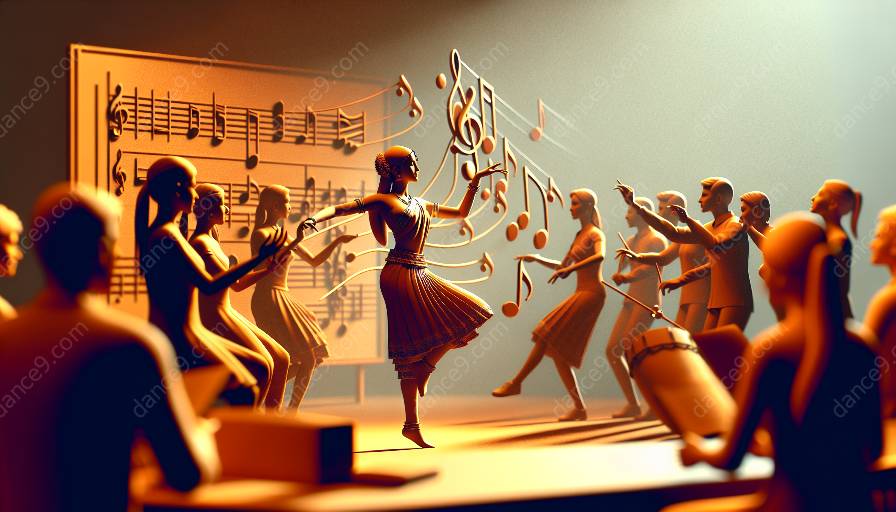Throughout history, the relationship between dance and music has been complex and intertwined, reflecting the cultural, social, and artistic expressions of diverse societies. This topic explores the historical connections between dance and music, examining their influence on each other and their significance in both traditional and contemporary contexts.
Historical Background:
The historical connections between dance and music date back to ancient civilizations, where rhythmic movements were often accompanied by musical beats, creating a harmonious fusion of expression and artistry. In many cultures, dance was used as a form of ritual, celebration, storytelling, or religious expression, while music played a pivotal role in setting the tone and rhythm for the accompanying dance.
For example, in ancient Greece, dance and music were integral parts of religious ceremonies and theatrical performances, with choreographers and musicians working closely to create cohesive artistic expressions. Similarly, in African cultures, traditional dances were performed to the rhythms of drums and other percussive instruments, with the movements and music conveying intricate narratives and traditions.
The Influence of Dance on Music:
The influence of dance on music is evident across various historical periods and musical genres. In the Baroque era, dance forms such as the minuet, gavotte, and sarabande influenced the composition and structure of instrumental music, with composers like Johann Sebastian Bach and George Frideric Handel incorporating dance rhythms and patterns into their compositions.
Furthermore, the evolution of dance styles such as ballet and ballroom dancing in the 18th and 19th centuries gave rise to specific musical accompaniments and orchestral compositions tailored to support the movements and emotions conveyed through dance. Composers like Pyotr Ilyich Tchaikovsky and Ludwig Minkus created iconic ballet scores, shaping the relationship between dance and music in the classical context.
The Influence of Music on Dance:
Conversely, music has played a significant role in shaping the choreographic elements of dance. In the 20th century, the emergence of popular music genres like jazz, blues, and rock 'n' roll influenced the development of new dance styles, leading to the creation of iconic dance movements and techniques. This symbiotic relationship between music and dance gave rise to influential choreographers such as Martha Graham, Alvin Ailey, and Bob Fosse, who drew inspiration from the musical compositions of their time to innovate and redefine dance forms.
Contemporary Perspectives:
In contemporary dance and music, the historical connections between the two art forms continue to evolve, reflecting diverse cultural influences and technological advancements. From avant-garde choreography set to experimental soundscapes to the fusion of traditional dance forms with contemporary music genres, the relationship between dance and music remains a rich source of exploration and creativity.
Furthermore, interdisciplinary collaborations between dancers, musicians, and visual artists have redefined the boundaries of dance and music, creating immersive performances that challenge conventional artistic expressions. With the advent of digital platforms and multimedia productions, the intersection of dance and music has expanded to encompass innovative audiovisual experiences that engage audiences in new and transformative ways.
Conclusion:
The historical connections between dance and music offer a captivating lens through which to explore the shared narratives, emotions, and cultural expressions that enrich both art forms. As dance continues to evolve as a dynamic and multifaceted discipline, its relationship with music remains deeply rooted in tradition while embracing the possibilities of contemporary creativity and interdisciplinary collaboration.

















